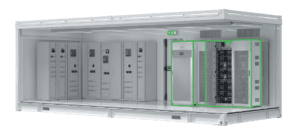The Impact of Digital Disruption Digital Disruption is a term which has been applied to changes brought about by digital technologies which are disrupting established ways of value creation, social interactions and perhaps even the way we think about things. In the data center market, the pace of change has created many technological challenges, but I recently got together with Ted Schadler, VP Principal Analyst to talk more widely about digital disruption and how it is affecting both the supply and demand side of innovation. Ted’s a well respected former MIT man with 24 years of technology industry experience. He’s been focusing on the effects of disruptive technologies on the workforce and workforce productivity, so, in my opinion, he’s well placed to comment – click here for Ted Schadler’s biography on the Forrester website.
First of all I asked Ted to define digital disruption. He said, “Digital disruption for Forrester means how does technology change, sometime radically change, the way we do things, the way we build things, the way we operate. The key point for digital disruption is we’re using digital technologies like cloud computing, mobile devices, mobile apps and analytics and big data – how do we get value out of that? Sometimes social collaborations, certainly software underlies all of these digital technologies, and then the disruptive part is pretty simple. It says, I’ve got all this new technology, this new capability to do new things. I can do old things in new ways, and that’s also interesting.”
So I asked how he thought digital disruption could be beneficial. “I’ve been thinking about this and I think there are three places where digital disruption can really improve things for customers: The first is in service delivery, this means how do I use digital technologies, mobile enablement for example, to make sure that a field service person has exactly what they need in that moment to fix something, or repair something, or maintain something and install something.
The second is how do I automate a service? Can I remotely manage or deliver a service using software, using connectivity, using connected products, not mobile in this case, perhaps analytics help me to automatically signal a problem or an alert of some kind. Then the last, and the one that’s probably over a longer period of time, is how do I improve the products themselves? How do I turn disconnected, offline products into smart connected products?’ How do I allow service automations to be delivered and improved on further by actually putting the ability to control through software into the products themselves?”
Finally, I asked Ted whether he could think of other examples of how digital disruption can be utilized. Ted told me, “It’s useful to break things down into details because how you get things done will vary based on what we are talking about. So, improving service deliver is very much about mobile enablement, a particularly interesting example comes from the consumer market where a company installing satellites on people homes faces the challenge of getting that service delivered first time right.
They’ve found they can improve service delivery by giving field techs small tablet computers. They fit into trouser pockets and then all of the information they need to configure the set top box, to install the handle, or a tough sighting problem, they can do through that mobile device. So they can point the camera on the mobile device at the sky to find the satellite to do the alignment.
What’s important there is they give people the information in their immediate context, they know which customers’ house they are standing in front of so they pull up the right information automatically. They can also do things like take a signature and close the work out and initiate service immediately and directly using the mobile device. So that’s just an example of mobile enabling, digitally enabling someone to be more productive and effective and efficient when delivering a service.
When you think about service automation, having a product that’s connected so that you can automatically manage that service remotely with a dashboard is beneficial. We’re seeing some really interesting digital disruption here, for example in Europe, where there a big effort to give diabetic patients a glucometer to measure blood sugar, which is automatically linked in to the healthcare provider. So that the patient’s blood sugar can be tracked over time.
Lastly, around products and connected products, this is the place where we’re starting to see some very interesting new models. So if we can build a smart product as opposed to a dumb product – one that’s connected in – then you can provision all kinds of new capabilities and deliver new kinds of services and maybe for example connect a control panel for the power system to the other power systems inside the company. Maybe there’s an end to end view of power consumption inside a facility that you can really step up and own and provision and manage through this technique.
Then as far as organizing, I think that’s really the place to think differently. Traditionally companies are organized into domains, for example hardware designers, hardware manufacturing and software. A lot of the change coming from digital disruption may inspire organisations to think differently about the way they organize themselves. For example, if a person understands the information a service technician needs, they can actually understand how to apply that by riding around in a truck and going on job sites and seeing where the problems are. When the software person and the service delivery person are sitting together they are going to find new solutions to take advantage of digital technology.
So that kind of co-location and working together to break down the boundaries that exist between different groups can have a huge pay off in relevance, in delivering in context service, in solving problems in those immediate moments of need, and the only way to do that is to operate in these small teams where people work together to cross these boundaries.


